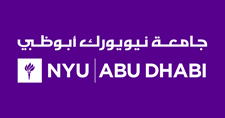The Government of Ethiopia has embarked on an ambitious industrialization strategy based on the creation of special economic zones as centers of export-oriented light manufacturing. The flagship industrial park of this strategy is located in the city of Hawassa, in southern Ethiopia. The Hawassa Industrial Park (HIP) is one of ten industrial parks that are currently being planned and built all over Ethiopia. At full capacity, the park in Hawassa, a city of 300,000, will provide employment to 60,000 workers, most of whom will be women between age 18-35, from the wider Southern Nations, Nationalities and People's (SNNP) Region. Relatively little is known about the impact of such industrial employment on worker welfare, or on the broader communities that workers come from. This project seeks to study the expansion of hiring for the park through a centralized, government-led system that integrates recruitment, registration, grading, and training of future workers.
Taking advantage of this centralized system, the researchers plan to implement a randomized control trial in which eligible job seekers, most of whom are female, at recruitment fairs are randomly allocated job offers. In addition, they plan to randomly assign communities to an already-planned geographic expansion of recruitment for the park. Detailed primary household survey data will be complemented with extensive administrative data from the recruitment system and from firms. This will allow the research team to answer a variety of research questions, at three different levels: the individual worker, the worker's household and its members, and other households in the community. For the community-level analysis, the researchers plan to look at impacts in three areas: the community labour markets and agricultural input choice, the entrepreneurial response and social norms.
This community component represents the greatest novelty of this project, and is likely to prove to be quite relevant for policymakers, both in Ethiopia and in other contexts. Indeed, fully quantifying the effects of large-scale, location-specific developments projects such as growth corridors, growth poles and industrial parks is often challenging, because generating counter-factual scenarios for such investments is complex, and a full estimation of impacts also requires an understanding of general equilibrium effects in various markets at the same time. Since the Ethiopian government is likely to use the Hawassa Industrial Park as a blueprint for the development of future parks, this project aims to provide actionable insights that may influence policy at several levels.






